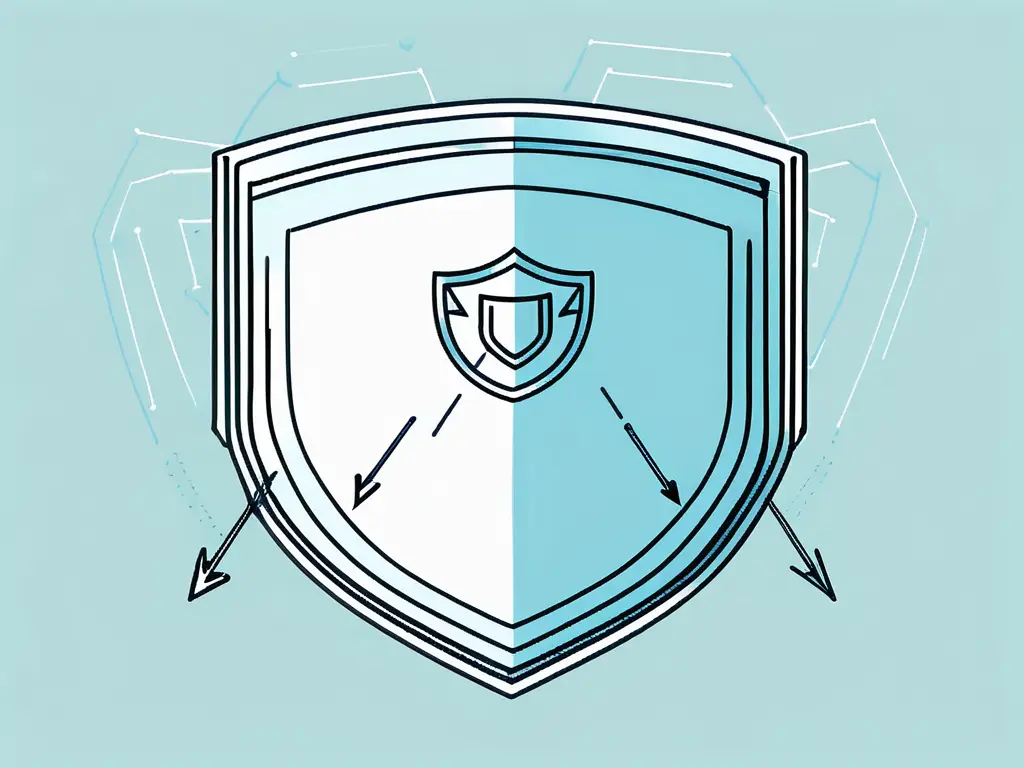TLS (Transport Layer Security) is a crucial component of internet security. It ensures that the data exchanged between a client (such as a web browser) and a server is encrypted and secure. However, there is a vulnerability known as a TLS downgrade attack that can undermine this security measure. In this article, we will explore the basics of TLS, the concept of downgrade attacks, how they work, and what steps can be taken to prevent and mitigate them.
Understanding the Basics of TLS
Before discussing TLS downgrade attacks, let’s familiarize ourselves with the protocol’s fundamentals. TLS, which stands for Transport Layer Security, is a cryptographic protocol widely used on the Internet to establish a secure connection between a client and a server. It provides authentication, confidentiality, and integrity of the data being transmitted.
When a client initiates a connection with a server, both parties engage in the TLS handshake process. During this handshake, they establish a secure channel, negotiate encryption algorithms, and exchange cryptographic keys. Once the handshake is complete, the client and server can securely communicate over the established channel.
The Role of TLS in Internet Security
TLS plays a vital role in ensuring the confidentiality and integrity of Internet communication. Encrypting the data in transit, TLS prevents eavesdropping and tampering by malicious entities. It safeguards sensitive information, such as passwords, credit card details, and private messages, from falling into the wrong hands.
TLS allows clients to verify the authenticity of servers using digital certificates. These certificates, issued by trusted Certificate Authorities (CAs), assure that the server is legitimate and not an imposter. This ensures that clients can trust the server they are communicating with and prevents man-in-the-middle attacks.
The Process of TLS Handshake
Now let’s dig deeper into the process of the TLS handshake. It consists of several steps:
- The client sends a Hello message to the server, indicating which TLS versions and cryptographic algorithms it supports.
- The server responds with a Hello message, selecting the highest compatible TLS version and encryption algorithm.
- The server sends its digital certificate to the client as proof of its identity.
- The client verifies the certificate’s validity and authenticity.
- The client generates a random pre-master secret, encrypts it using the server’s public key from the certificate, and sends it to the server.
- Both client and server use the pre-master secret to independently compute the master secret, which is then used to generate the session keys for encryption and decryption.
- Once the session keys are derived, the client and server can securely exchange data over the established secure channel.
The TLS handshake is a complex dance of cryptographic protocols and algorithms. It ensures that both the client and server can trust each other and establish a secure connection. It is designed to be resilient against various attacks, such as eavesdropping, tampering, and impersonation.
During the handshake, the client and server carefully exchange messages and validate each other’s identities. The server presents its digital certificate containing its public key and other identifying information, allowing the client to verify its authenticity. This process involves checking the certificate’s expiration date, verifying the digital signature, and ensuring that a trusted CA issues the certificate.
Once the client has verified the server’s identity, it generates a random pre-master secret and encrypts it using the server’s public key. This ensures that only the server can decrypt the pre-master secret with its corresponding private key. Both the client and server then independently compute the master secret, which is used to derive the session keys for encryption and decryption.
Following this intricate handshake process, TLS establishes a secure and trusted connection between the client and server. It forms the foundation of secure Internet communication, protecting sensitive information and ensuring the privacy and integrity of data transmitted over the network.
The Concept of Downgrade Attacks
Now that we have a solid understanding of TLS, let’s explore the concept of downgrade attacks. In a TLS downgrade attack, an attacker manipulates the TLS handshake process to force the use of an older, less secure version of TLS. This downgrade weakens the connection’s security and makes it vulnerable to various attacks.

How Downgrade Attacks Work
The mechanics of a TLS downgrade attack are relatively straightforward. The attacker intercepts the initial TLS handshake between the client and server and modifies the messages exchanged during the handshake. By impersonating the server, the attacker can influence the negotiation process and trick the client into accepting an older version of TLS.
However, it’s important to note that conducting a successful downgrade attack requires a deep understanding of the TLS protocol and its vulnerabilities. Attackers need to be familiar with the specific versions of TLS being used by the client and server and the weaknesses present in those versions. This level of expertise allows them to exploit the nuances of the TLS handshake and manipulate it to their advantage.
Once the connection is downgraded, the attacker can exploit known vulnerabilities in the older TLS version to launch attacks. These attacks can range from eavesdropping on sensitive information to injecting malicious code into the communication stream.
The Impact of Downgrade Attacks on Security
Downgrade attacks have significant security implications. By forcing a lower TLS version, the attacker bypasses the stronger cryptographic algorithms and security improvements introduced in newer versions. This exposes the connection to potential vulnerabilities patched in later TLS versions.
Downgrade attacks can undermine the trust relationship between clients and servers. If a client unknowingly connects to a server using a downgraded TLS version, it may assume that the server is secure when compromised. This can lead to the leakage of sensitive information or the execution of malicious commands on the client’s system.
It’s worth noting that downgrade attacks are not limited to TLS alone. Similar downgrade techniques can be applied to protocols like HTTP to weaken security measures and exploit vulnerabilities. This highlights the importance of staying vigilant and ensuring that all systems and protocols are updated with the latest security patches.
Unveiling TLS Downgrade Attacks
Now that we grasp the inner workings of downgrade attacks, let’s delve deeper into their mechanism and ways to identify them.
But before we do, let’s take a moment to understand the gravity of these attacks. TLS (Transport Layer Security) is a crucial protocol ensuring secure internet communication. It provides encryption, authentication, and integrity, safeguarding our sensitive data from prying eyes. However, downgrade attacks pose a significant threat to this security, exploiting vulnerabilities in the protocol to compromise our connections.
The Mechanism of TLS Downgrade Attacks
A TLS downgrade attack typically involves three stages:
- The attacker intercepts the initial TLS handshake and identifies the TLS versions supported by the client and server.
- The attacker actively manipulates the handshake messages, forcing the use of an older, less secure TLS version.
- Once the connection is downgraded, the attacker can exploit vulnerabilities specific to the downgraded TLS version.
By tampering with handshake messages, the attacker can deceive the client and server into believing that they are engaging in a secure connection, while in reality, the connection is compromised. This manipulation of the handshake is a cunning tactic employed by attackers to exploit the trust established during the TLS negotiation process.
But how can we identify such nefarious activities?
Identifying a TLS Downgrade Attack
Identifying a TLS downgrade attack can be challenging, as the attacker’s actions are designed to go undetected. However, some signs can indicate a downgrade attack:
- An unexpected switch to an older TLS version, especially if the client and server support newer versions. This sudden downgrade should raise suspicion, as it is uncommon for a secure connection to regress to a less secure state.
- Errors or warnings related to the TLS handshake negotiation process. Watch for anomalies or inconsistencies during this crucial phase of establishing a secure connection.
- Suspicious certificate behavior, such as expired or self-signed certificates. Certificates play a vital role in verifying the authenticity of a website, and any irregularities in their validity should be thoroughly investigated.
- Unusual network traffic patterns or unexpected delays during the handshake. Unexplained fluctuations in network activity or delays in the handshake process could be indicative of a malicious interference.
It is important to be vigilant and maintain a strong security posture to minimize the risk of falling victim to a TLS downgrade attack. Regularly updating TLS versions, monitoring certificate validity, and staying informed about the latest security practices are essential steps in safeguarding our online interactions.
By understanding the mechanism of TLS downgrade attacks and identifying their signs, we can better protect ourselves and ensure that our online communications remain secure.
Preventing and Mitigating TLS Downgrade Attacks
As TLS downgrade attacks pose a significant threat to internet security, it is essential to take proactive measures to prevent and mitigate them. Here are some best practices:

When preventing TLS downgrade attacks, staying ahead of the curve is crucial. Implementing the following practices can help protect against these nefarious attacks:
- Maintain up-to-date software and firmware on both clients and servers. Check for updates regularly and apply them promptly to ensure you have the latest security patches.
- Enable automatic updates to ensure the latest security patches are applied without delay. This will protect your systems against newly discovered vulnerabilities.
- Disable support for outdated TLS versions, such as SSLv2 and SSLv3. These older versions are known to have security flaws that attackers can exploit.
- Enforce strong certificate validation to detect any suspicious or revoked certificates. By thoroughly verifying the authenticity of certificates, you can prevent attackers from using fraudulent ones to deceive your systems.
- Implement certificate pinning to prevent the acceptance of fraudulent certificates. By associating a specific certificate with a particular domain, you can ensure that only valid certificates are accepted, further enhancing your security.
By adhering to these best practices, you can reduce the risk of falling victim to a TLS downgrade attack and maintain a robust security posture.
However, if you suspect an ongoing TLS downgrade attack, it is crucial to take immediate action to mitigate the threat. Here are some steps you can take:
- Terminate the connection with the suspected compromised server. You can prevent further compromise and limit the attacker’s access to your systems by cutting off communication with the potentially malicious entity.
- Analyze the network traffic logs to identify any suspicious activities or anomalies. By carefully examining the logs, you can gain valuable insights into the attack and understand its scope.
- Implement network monitoring tools to detect and alert on potential downgrade attacks. These tools can help you stay vigilant and promptly respond to any suspicious activities, ensuring that you are always one step ahead of the attackers.
- Report the incident to the appropriate security response team or authorities. By promptly notifying the relevant parties, you contribute to the collective effort of combating cybercrime and help protect others from similar attacks.
- Consider implementing additional security measures, such as Intrusion Detection Systems (IDS) or Web Application Firewalls (WAFs), to further protect against future attacks. These additional layers of defense can provide an added level of security, making it even more challenging for attackers to breach your systems.
By promptly responding to a suspected TLS downgrade attack, you can minimize the potential damage and prevent further compromise. Remember, staying vigilant and proactive is key to maintaining a secure online environment.
The Future of TLS and Downgrade Attacks
As technology evolves, so do the protocols and standards designed to secure internet communications. It is essential to stay abreast of the latest developments in TLS to understand how they impact the landscape of downgrade attacks.

Upcoming TLS Protocols and Their Impact on Downgrade Attacks
The TLS community continuously develops new versions to address security vulnerabilities and enhance performance. For example, TLS 1.3 introduced improvements in cryptography and handshake mechanisms, making it more resistant to downgrade attacks.
With TLS 1.3, the handshake process has been streamlined, reducing the number of round trips required to establish a secure connection. This improves performance and minimizes the window of opportunity for attackers to interfere and manipulate the negotiation process. Additionally, TLS 1.3 eliminates support for weak cryptographic algorithms, further reducing the attack surface for downgrade attacks.
By adopting the latest TLS protocols and keeping systems up to date, organizations can bolster their defenses against downgrade attacks and ensure stronger user security. However, it is important to note that adopting new protocols may require careful consideration and testing to ensure compatibility with existing systems and applications.
The Evolving Threat Landscape of Downgrade Attacks
As security measures advance, so do the techniques employed by attackers. Downgrade attacks will likely continue to be a concern in the future, requiring ongoing vigilance and continuous improvement in security practices.
Attackers are constantly finding new ways to exploit vulnerabilities and circumvent security measures. For instance, they may leverage social engineering techniques to trick users into connecting to insecure versions of TLS or manipulate network traffic to force a fallback to weaker protocols. As a result, organizations must remain proactive in monitoring and detecting downgrade attacks and implementing measures to prevent them.
The emergence of quantum computing poses a potential threat to the security of TLS. Quantum computers can potentially break current cryptographic algorithms, rendering them ineffective. To address this, researchers are actively exploring post-quantum cryptography, which aims to develop algorithms resistant to quantum computer attacks. Adopting post-quantum cryptography in future TLS versions will play a crucial role in mitigating the risks of quantum computing.
Organizations and individuals alike must remain vigilant, update their systems regularly, and stay informed about emerging threats and mitigation strategies to protect against the evolving threat landscape of downgrade attacks. By investing in robust security measures and staying ahead of the curve, we can ensure the integrity and confidentiality of our online communications.
Conclusion
TLS downgrade attacks pose a real threat to internet security. Understanding the basics of TLS, the mechanics of downgrade attacks, and the steps to prevent and mitigate them is essential for maintaining a secure online environment. By staying informed and adopting best practices, we can safeguard our data and ensure a safer online experience.
As the threat of TLS downgrade attacks continues to evolve, ensuring your organization’s cybersecurity measures are up to the challenge is more important than ever. Blue Goat Cyber, a Veteran-Owned leader in cybersecurity, offers bespoke services to protect your business from such sophisticated threats. Our team of certified experts specializes in medical device cybersecurity, penetration testing, and compliance with HIPAA and FDA regulations, providing you with the assurance that your digital assets are secure. Don’t let emerging cyber threats compromise your defenses. Contact us today for cybersecurity help and partner with Blue Goat Cyber to transform your cybersecurity challenges into a strategic advantage. Secure your operations, maintain compliance, and achieve peace of mind in the digital age.


